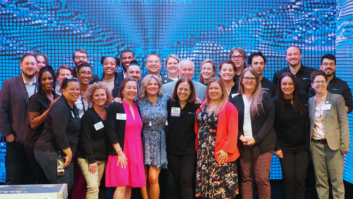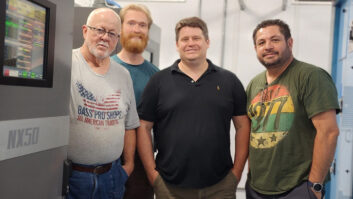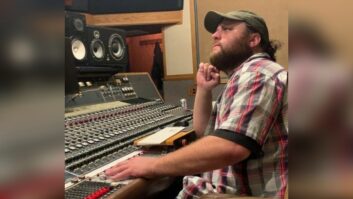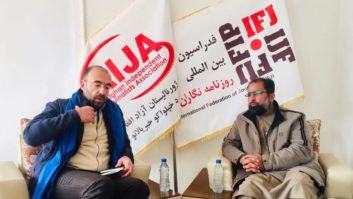Hear from three Voice of America radio journalists seeking to provide studio quality sound from home while complying with social distancing best practices during the COVID-19 pandemic.
Chet Rhodes
Special Project Manager, Studio and Production Operations
Radio World: VOA says the health crisis has “forced Voice of America’s nearly 50 separate newsrooms out of studio facilities and into its journalists’ homes across the world.” Focusing on the radio and audio services for the moment, describe the technical challenges that this raised, and how your team has gone about solving them.
Chet Rhodes: Very early during this crisis we had to send half of our radio staff home that operate the radio studios to self-isolate themselves. Staff from all over VOA stepped up to volunteer to run shows as the organization worked to move programing out of the building. As of today, all radio programming is being done remotely. Staff are producing shows at home or in the field and sending in files to be played out of our automation systems. Live programming, such as top of the hour newscasts, are being done with VOIP technology or over the cell phone network.
RW: What general technology platforms and specific products are you using and how do the pieces plug together?
Rhodes: We use a wide selection of software from Audacity which is free, to all the Adobe products such as Audition and Premiere, which have great audio editing tools.
RW: What has the impact of the crisis been on your air talent and on other staff?
Rhodes: People have been very supportive across the agency in working to keep our staff safe but also continue the mission of broadcasting the news to the global audience. Many on the staff have expressed concerns about safety, but at the same time they are offering suggestions on how to operate in this challenging environment.
RW: What is the strategy of the VOA technology team to react to the coronavirus, as far as its overall operational and technical processes are concerned?
Rhodes: By increasing the use of the use of social media and digital platformsk, VOA has been able to focus on moving people from working in the building to enabling people to work from home and produce content while doing so. Another key is to continue to improve the quality of the remote production for our sophisticated global audience.
RW: How “virtual” can your operations get, and how?
Rhodes: With radio, we can get completely “virtual.” All of our radio services have in place digital platforms to deliver content and by using something radio has used for years — a phone. We can still gather sound from anywhere and get it on the air. We are using streaming, podcasting and social media.
RW: Any specific technical obstacles have you encountered that you have had to solve, other than described above?
Rhodes: Working from the field has always been part of radio production, so in many ways we are going back to the basics; while some staff have not had to work at home at this pace before, staff has had to make sure the home environment, the Wi-Fi, the older home computer was ready to support everything needed. VOA has deployed laptops, and many staff also upgraded home systems.
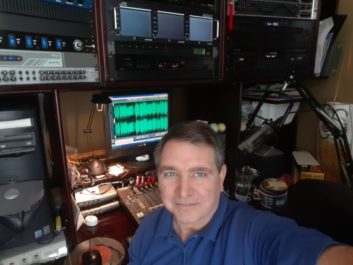
RW: What lessons can other engineers and technical managers learn from what you’ve been doing these past two weeks?
Rhodes: Even with the staff working virtually, a core technical staff is still needed to work in the building to maintain our operations. Plans have been in place for years for various emergencies, we found that some were outdated, others impractical due to the nature of this emergency. Getting decisions made early on by VOA leadership that we would be working to get almost everyone out of our building was important, so we knew from the start the end goal and have been working towards that.
RW: Do you think these infrastructure changes will be permanent in any way?
Rhodes: The ability for people to work at home for broadcasting has been something looked at for a long time. This might accelerate that to give us more workforce flexibility. All the work done to support that remote workflow will likely remain in place in some way.
RW: What else should we know?
Rhodes: People will be overwhelmed during a situation like this. Support them, and provide the best tools you can and using online collaboration software make sure they can have support to learn how to use them quickly. A lot of training will be needed to support new workflows that are developed.
Martha Townes
Managing Editor (Internet), East Asia and Pacific Division
RW: Much of the focus in the press release was about how your TV people are setting up remote facilities. Our readership focuses on radio and audio, but your radio teams too probably are “thinking visually” and setting up for on-camera work, yes?
Martha Townes: Because social media is such an important way to engage with our audience, our radio reporters have been “thinking visually” for many years. Our Indonesian, Thai, Lao, Khmer services, for example, regularly take a camera into the radio studio and broadcast their programs live on Facebook.
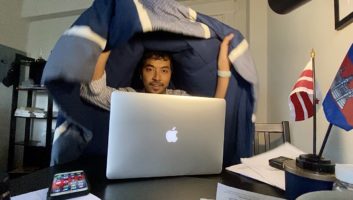
The shift to working from home has resulted in innovation and ingenuity.
In the absence of sound proof recording booths, our reporters from Korean and Burmese voiced reports in their closet. Our Khmer staff reporting to Cambodia improvised with blankets. VOA Thai replaced their Facebook Live radio show with a hybrid approach. They recorded their program as an mp4 video file that they posted on Facebook. They stripped out the audio from that recording and aired it on their traditional radio broadcast channels.
Lekhena Sreng
Reporter, VOA Khmer Service
RW: How has the situation changed your workflow?
Lekhena Sreng: I see telework in a positive way except the real life social disconnection but we have social media to reconnect us for now. I started working from 5 a.m. in my living room, gathering all the texts and audios from the newscasters, reporters either in DC or Phnom Penh to record using my iPhone, edit the audio using Adobe Premiere, place the combined 60-minute show in our container for radio.
I talked to some of my friends and family, they all can’t tell I did it from living room but thought I go to work every day.





